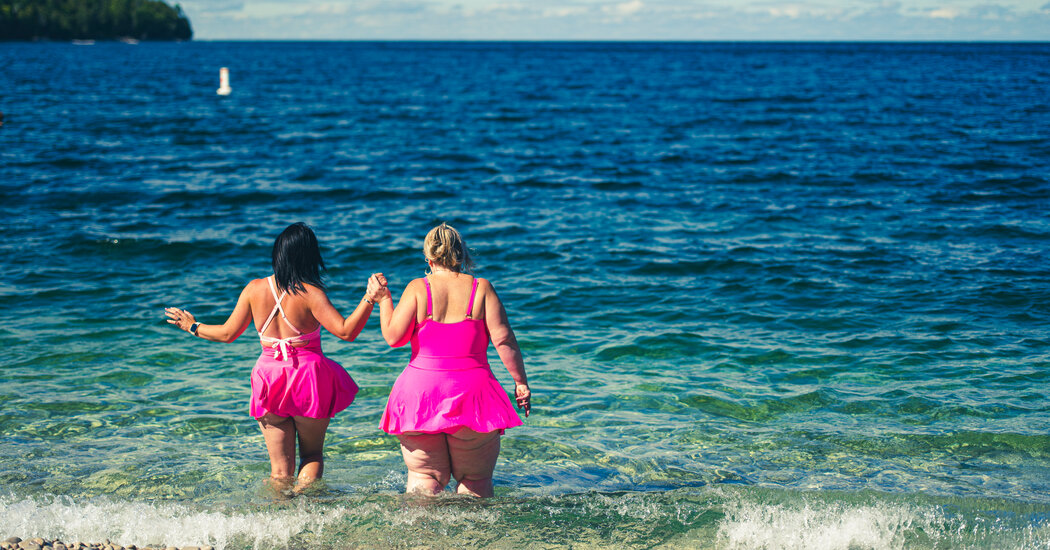Five hours after leaving Chicago, we ran out of pavement. At the tip of the Door Peninsula in northeastern Wisconsin, the ice cream parlors disappeared. The wine shops and art galleries, too. Just a simple tollbooth, and the breakwaters beyond, and a small archipelago gathered like clouds on the horizon. A grinning crewman waved us aboard a 92-ton ferry, and before my wife, Mel, and I could exit our car, the Arni J. Richter was plowing through Lake Michigan. Like us, it seemed eager to flee the crowds.
Washington Island beckoned less than four miles ahead, but a certain darkness whispered beneath the lake. The French called this strait Porte des Morts, or Death’s Door, most likely cribbing the moniker from the Potawatomi. Here, where the warmer and shallower waters of Green Bay meet the darker and cooler waters of Lake Michigan, the currents swirl and rocky shoals hide just beneath the surface. Shipwrecks still litter the shallows.
From the starboard side, we struggled to identify a tiny smudge between lake and sky. One man asked if it was a freighter before another, squinting at his cellphone, concluded it was Pilot Island, named for a lighthouse now colonized by cormorants. We passed Plum Island and Detroit Island, neither accessible by ferry. And finally, we slipped into the dock on Washington Island, 30 minutes and a world away.
Though it’s technically part of Door County — a sort of Midwestern Cape Cod — the 24-square-mile island leaves the trappings of tourism for the mainland. Its biggest gift shop doubles as a True Value hardware store. Cellphone service is spotty, at best. There’s no craft brewery, no chain hotel, no definable business district — and that’s the point. As Matt Poole, a co-manager of the Hotel Washington, later explained: “Washington Island is where Door County people go to remember what Door County used to be.”
A refuge from the modern world
In the fall of 1870, four young bachelors from the Icelandic fishing village of Eyrarbakki landed on Washington Island. Their arrival, in turn, drew more immigrants from their homeland. By the end of the century, the island had become a center of Icelandic culture.
“For those with enough money to buy where the land is more fertile, the Island is one of the worst places to come to; but for the poor it is one of the best, for they can live off the water and off the land,” wrote one of the bachelors in a letter reprinted by an Icelandic newspaper. “I dare say there is no lazy…
Click Here to Read the Full Original Article at NYT > Travel…
